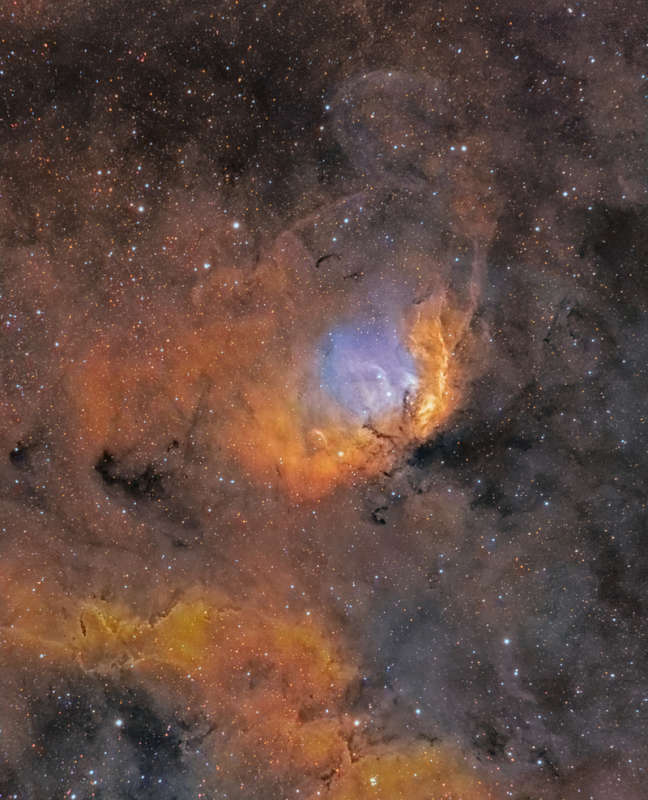Credit & Copyright: J-P Metsävainio
(Astro Anarchy)
Explanation:
Framing a bright emission region
this telescopic view
looks out along the plane of our Milky Way Galaxy toward the
nebula rich constellation
Cygnus
the Swan.
Popularly called the Tulip Nebula the glowing cloud of
interstellar gas and dust is also found in the
1959 catalog
by astronomer Stewart Sharpless
as
Sh2-101.
About 8,000 light-years distant and 70 light-years across
the complex and beautiful nebula blossoms at the center of this
composite image.
Red, green, and blue hues
map emission
from ionized sulfur, hydrogen, and oxygen atoms.
Ultraviolet radiation from young, energetic stars
at the edge of the Cygnus
OB3 association, including
O star HDE 227018,
ionizes the atoms
and powers the emission from the Tulip Nebula.
HDE 227018 is the bright star very near the blue
arc at the cosmic tulip's center.
Glowing across the electromagnetic spectrum,
microquasar Cygnus X-1 and a curved shock front created
by its powerful jets lie
toward the top and right.
1999 2000 2001 2002 2003 2004 2005 2006 2007 2008 2009 2010 2011 2012 2013 2014 2015 2016 2017 2018 2019 2020 2021 2022 2023 2024 2025 |
Yanvar' Fevral' Mart Aprel' Mai Iyun' Iyul' Avgust Sentyabr' Oktyabr' Noyabr' Dekabr' |
NASA Web Site Statements, Warnings, and Disclaimers
NASA Official: Jay Norris. Specific rights apply.
A service of: LHEA at NASA / GSFC
& Michigan Tech. U.
|
Publikacii s klyuchevymi slovami:
emissionnaya tumannost' - emission nebula - Lebed' - Lebed' X-1
Publikacii so slovami: emissionnaya tumannost' - emission nebula - Lebed' - Lebed' X-1 | |
Sm. takzhe:
Vse publikacii na tu zhe temu >> | |
